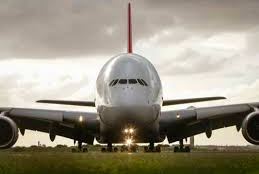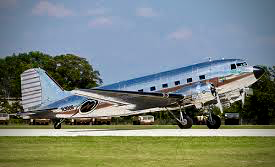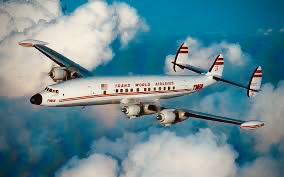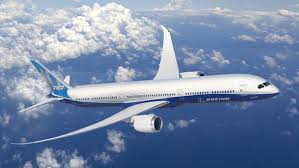Air Carriers & Craft. + BA’s IT BS📌
9/10/21—Planes and the airlines that fly them: Looking back at the classics, such as Lockheed’s grand ‘Super G’ Constellation and the workhouse Douglas DC-3, projecting well into the sky blue future, Vamigré blanket covers the air carrier and craft industries worldwide. What is the latest in models, capacity configurations and cabin comforts? How do food services and inflight info/entertainment compare? Where do carriers stand vis-a-vis fleet modernization and maintenance? Which aircraft are the best and worst in terms of fuel efficiency, emissions, noise standards—as well as cruising altitude and speed?
Moreover, how do aircraft manufacturers stack up with regard to quality product/control, R&D, technological advancements, government subsidies and fiscal health? Be it Boeing, Airbus, Canada’s Bombardier ( though currently under financial pressure for failing to gain ground or skies on single-aisle 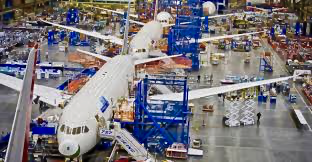 models by the Boeing/Airbus duopoly or Brazil’s Embraer—even Russia’s suspect Antonovs—plus makers of smaller, more regional and/or private aircraft. But even more of a competitive threat to 737s and A320s now is China’s single aisle Comac C919.
models by the Boeing/Airbus duopoly or Brazil’s Embraer—even Russia’s suspect Antonovs—plus makers of smaller, more regional and/or private aircraft. But even more of a competitive threat to 737s and A320s now is China’s single aisle Comac C919.
Also to be watched most recently are the airplane financing/ investment bubble and airline hunger for new 737s and A320s, which have Boeing and Airbus straining desperately to deliver the jets (13K due for delivery in the next 7 years, amid soaring aircraft demand from growing Asian carriers).
Along those lines, JetBlue has placed orders for 60 next-gen A220-300 Series higher efficiency/capacity small jets from Airbus. At the same time Airbus SE has since teamed with Canada’s Bombardier on regional jets. Boeing in turn seeks to take over Brazil’s Embraer intermediate jetliner business in another aero-manufacturers’ arms race. Moreover, both industry giants are keeping a keen eye on the deep-pocketed China Comac challenge.
Now with $43B more aircraft orders (737 Max 8s, 787-8/9, A320neos) from London’s Farnborough Air Show alone, both companies have missed 2018 delivery targets, amid production backlogs, supplier bottlenecks and labor issues, what with their complex, far-reaching supply chains. Such intense output pressures can significantly impact aircraft quality, so safety factors do come into question. Moreover, any airline seat/mile revenue slowdowns and descending ROI rates will have ‘tourist investors’ who have parked money temporarily will jettison out of the sector at the speed of flight, leaving ‘white tails’ galore.
Last, but surely not least, Vamigré will fully chronicle the sub-and supersonic marvels to come, as they take flight. While inefficient, dinosaur A-380s and Boeing 747s now head for the mothball fleets. Otherwise, Air C&C is currently in a holding pattern, cleared to land shortly…
+ Is Southwest Heading Southward?
(***Meantime, pls. see below…)
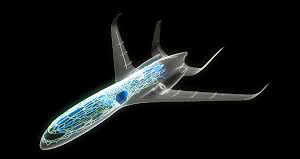
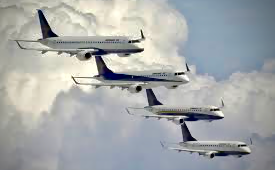
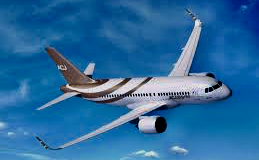
Another Striking British Air Update (9/10/19).
![]() As if the string of British Airways’ sticky wickets weren’t enough, the flag carrier now cancels some 1,700 flights due to a pilots’ strike over pay disputes. The first such walkout ever for BA’s 3,900 pilots, their union, British Airline Pilots Association (BALPA), leads a work stoppage of 48 hours and counting—nearly 200,000 passengers having been waylayed thus far.
As if the string of British Airways’ sticky wickets weren’t enough, the flag carrier now cancels some 1,700 flights due to a pilots’ strike over pay disputes. The first such walkout ever for BA’s 3,900 pilots, their union, British Airline Pilots Association (BALPA), leads a work stoppage of 48 hours and counting—nearly 200,000 passengers having been waylayed thus far.
For its part, the airline apologizes for yet another bout of passenger inconvenience due to nearly 100% flight cancellations. BA claims it has endeavored to resolve the pay standoff for months, that is had notified passengers holding reservations of a potential pilot walkout in mid August.
Its e-mail blast was said to offer alternative flights when available on it and other airlines, or full refunds. But many outraged customers considered it too little warning, too late, given that their travel plans had already been made.
BALPA complains that the BA offer of a 11.5% pay boost over three years wasn’t enough to compensate pilots for their substantial pay cuts during recent lean years. The union has also pushed for a share of carrier profits (£2b in 2018), the bulk of which currently goes to ‘overcompensated’ company leaders, while BA’s stock price drops some 3%.
Pilots contend BA brass are refusing to negotiate in good faith, putting profit over flight crew and passenger safety and needs. BALPA warns that beyond the 48-hour work stoppage, a further strike action will begin September 27 if the issues remain unresolved.
In any event, Vamigré will stay tuned, to see if BA continues punishing its brand or settles up and strikes out to reburnish its tarnished tails—say, with a make-good airfare sale. (MTC…)
BA: Stop IT with the BS?
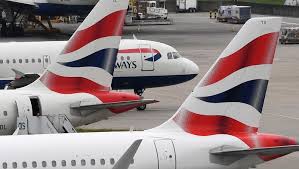
Still, this flight pattern is clear and turbulent of late:
June, 2018. Here, the carrier cancelled some 2,000 “too cheap” tickets on flights bound for Dubai and Tel Aviv due to its “fare error” which had it offering £200+ flights for as little as £1 plus tax. BA claimed it was an “obvious unintentional mistake”, and proceeded with the cancellations by broadsiding affected passengers passengers at the boarding gate without prior notice. However the affected passengers held that
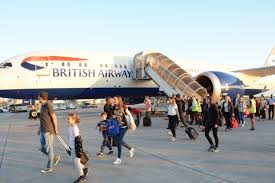 they bought the tickets in good faith, and that the airline’s error shouldn’t stop them from flying at the price they booked, particularly when they were not informed of the cancellations in a timely manner.
they bought the tickets in good faith, and that the airline’s error shouldn’t stop them from flying at the price they booked, particularly when they were not informed of the cancellations in a timely manner.BA offered a full refund of their paid fare, along with a £100 voucher. “Too restricted”, countered the passengers, who still were stuck with the credit card fees. Surveys also show that posted fare errors are honored nearly 70% of the time, airlines fearing the bad PR from, if not legal challenges to, such ‘corrective’ cancellations. Apparently IAG is digging in for the latter.
July, 2018. Dozens of BA flights (mainly short-hauls) in and out of Heathrow were cancelled due to IT issues, labeled as supplier system failure. Terminals filled with disrupted passengers, their trips delayed by 12 hours and more. Yet the carrier counters that it is still strong, controls vast slots at Heathrow and has an “enviable safety record”. So question is, where does IT stop and go from here, and how will the carrier right its flagship?
-400 euros for 3+ hour medium-haul delays.
-300 euros for long-haul delays of 3-4 hours; 600 euros for 4+ hours.
![]()
Buns in the Oven and Overhead.
With all the service snafus and headaches the airlines have caused and effected, if not inflicted of late, it would seem they have more urgent issues than the particular hair styles of their overworked employees.
Yet no less than British Airways is pulling its hair out over a customer service rep and his man bun. Trim, stylish: nevertheless, his top-knot was a no-go with overheated carrier brass, who called his crowning creation “women’s stuff”, and that better he don dreads, a tail or turban. Otherwise, off with his header.
Couple this with employee complaints about stringent uniform dress codes throughout the airline industry, and crew/staff morale takes another haircut. Carriers maintain that “consumer facing” workers must maintain a fine balance between properly representing the airline and expressing themselves, regardless of their sex, beliefs or origins.
To that, Vamigré simply says, make our flights smoother and more comfortable, and hustle up the snack/beverage service. We’ll leave the buns, braids and buzz-cuts to y’all…
** Swearing by/at Allegiant Air? A Carrier Case…
Here flies this low-cost, no-frills carrier onto a range of critical radar screens…
Specifically, witness aborted take-offs, unscheduled landings; engine blow-ups/fires, onboard smoke and fumes; air pressure losses, malfunctioning oxygen masks and emergency evacuations. Taken together, over 100 reported mechanical incidents and/or inflight emergencies in three years, 25 engine failures alone in 24 months. 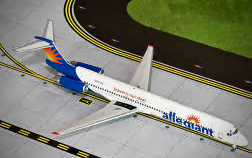
More seriously, former Allegiant employees have revealed that the carrier has been quelling maintenance write-ups; pilots have noted the stifling of maintenance records requests. Moreover, overworked crews are discouraged from reporting such shortfalls/defects (with threats of termination)—spurning the pursuit of safety over profits. This, to where its employees are largely afraid to fly the carrier as passengers themselves, and one retired NTSB head won’t let his family board Allegiant flights at all.
Still, the FAA concludes such ongoing Allegiant issues are being appropriately addressed, finding no systemic problems, re-certifying the airline time after time. But critics claim the agency fails to issue letters of correction, follow up on the carrier’s red flags or exact enforce actions/fines on its infractions and non-compliance. Then again, Allegiant may finally be hearing the blowback loud and clear, beginning with the voluntary replacement of its airworn MD-80s.
So now the trick is to continue making the airline truly airworthy as a safe, reliable player in the much needed low-cost skies. That is, high-flying and vital anew, rather than becoming a lowly, looming ValuJet redux…
Update: Cuban Airliner Crash and Over-Aged Planes.
The recent fiery crash of a Cubana de Aviación domestic flight shortly after take-off from Havana’s José Marti International Airport underscores the sometimes fatal dependence on outdated, overused aircraft, particularly by second and third world airlines. Having grounded many of its fleet due to mechanical and maintenance problems, Cuba’s cash and sanctions-starved state carrier has been leasing marginally airworthy from Mexico’s charter airline, Aerolineas Damojh—whose track record is cloudy, to say the least. Past complaints against both Cubana and Damojh include shoddy (e.g., engine) maintenance, crews’ lack of technical knowledge and unsafe overloading of baggage in cabins and toilets.
In this case, a nearly 40 year-old Boeing 737-200 enroute to Holguin went down in a farm field near Santiago de Las Vegas, 104 mostly Cuban 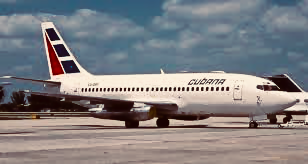 passengers and a Mexican crew of six perished upon impact and immediate explosion; three possible survivors—reportedly all women—remain in critical condition in a Havana hospital (two have since died). Who knows if/when there will be a definitive determination of cause?
passengers and a Mexican crew of six perished upon impact and immediate explosion; three possible survivors—reportedly all women—remain in critical condition in a Havana hospital (two have since died). Who knows if/when there will be a definitive determination of cause?
Be it patched together Boeing/Airbus relics or Russia’s notorious Tupolevs and Irkuts, aged, overworked aircraft pose an ongoing problem and hazard globally, today more than ever. Which is why Vamigré will be closely monitoring the age, conditions and maintenance of even the most far-flung fleets, assessing the risk/reward ratio of boarding and flying obscure airlines, whether in pursuit of fare value or exploration and adventure all over the the world…

